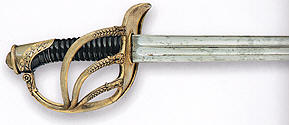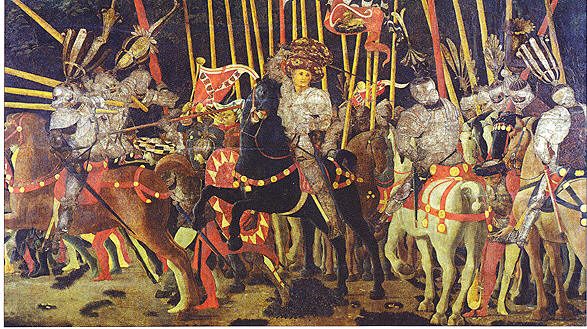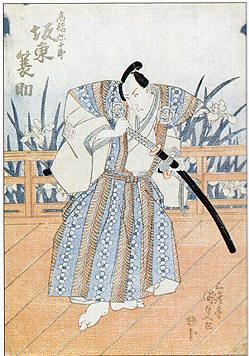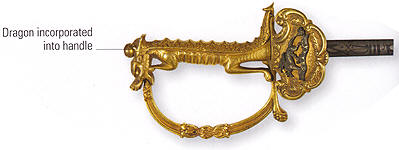History of Swords and Sabers
 This
section traces the fascinating history of
swords, sabers, spears and
lances through to the 20th century. This
section traces the fascinating history of
swords, sabers, spears and
lances through to the 20th century.
Since the first flint
spearheads emerged at the dawn of humanity around
600,000 years ago, edged weapons have played an
incredible role in the shaping of human history.
Used by people as diverse as the ancient Egyptians,
medieval knights and American civil war soldiers,
these weapons have become some of history's most
powerful status symbols.
ABOVE:
French
dragoon officer’s sword, Model 1854.
Introduction
From the primitive edged
weapons used by early humans through to those of the
modern world, the history of the sword is a truly
fascinating story. It has been used as a fighting
weapon, a symbol of authority, a mark of social rank
and as a ceremonial object. For centuries, the sword
remained the first weapon of choice for the military
soldier and its pre-eminence was secured by a
combination of continuous technological improvements
and adaptation to ever-changing battlefield
conditions.
Early Swords and
Sabers
The historical background to
the development of the sword and other edged weapons
starts with an examination of the simple tools of
Stone Age people, including hand-held flint points
and the first axes, which date from 1.4 million
years BC.
We then move ahead
in time to focus on such ancient civilizations as
Sumeria and Mesopotamia, where metalworkers began to
combine bronze and copper alloys to produce reliable
spears, axeheads and swords.
In ancient Egypt, the countless
invasions and subsequent assimilations led to the
introduction of bronze- and iron-bladed weapons.
Although noted for their reliance on the spear and
shield, the Greek infantryman or “hoplite” also
carried a straight, double-edged, leaf-shaped short
sword known as the “xiphos” and it became the model
for the more recognizable Roman “gladius”. At this
time, Celtic swordsmiths were also producing swords
of unique beauty and robustness.
11th to 17th
Century European Swords
In Europe, the wide-bladed and
double-edged Saxon and Viking broadsword would
become the inspiration for the early medieval
“knightly” sword of the 11th to the 14th century. In
both Europe and Asia, polearms (pole-mounted
weapons) were used on the battlefield, and in the
jousts of the medieval and Renaissance periods,
public displays of horsemanship and fighting skills
were performed using the lance and the sword.
Sword design changed during the
Renaissance and, from around 1400, the emphasis
shifted from a sword that had cutting and slashing
capabilities to one that could pierce plate armour.
Around 1500, the rapier appeared and soon became the
sword of choice for a gentleman and the ultimate
weapon for trials of honour, such as the duel.
German and Swiss mercenaries (“Landsknechte”) roamed
across Europe, carrying their own huge, two-handed
swords and waded into massed rows of enemy infantry,
cutting and hacking a passage through for the
cavalry.
During the 16th and 17th
centuries, more accurate firearms and artillery were
developed, and swords were relegated to a secondary
role, although they were still regarded as the
preferred weapon during close combat with the enemy.

ABOVE:
The two-handed Landsknecht sword was
often used by Swiss and German mercenaries during
the 15th and 16th centuries and was very effective
when attacking infantry units.
17th to 20th
Century World Swords
The introduction of the
smallsword in the late 17th century highlighted the
new requirement for both practicality and fashion.
On the battlefield, the seasoned soldier knew that a
more robust broadsword would always be required,
such as the distinctive broadsword of the Scottish
Highlander. Wide-bladed and double-edged, this
broadsword had an enclosed basket hilt and was
devastating when used at close quarters.

ABOVE:
The Battle
of San
Romano
in 1432. The medieval battlefield normally comprised
a mass of polearms and poleaxes which were used to
inflict injuries both from horseback and on foot.
During the late 18th and early 19th centuries Europe
and the outside world were rocked by
countless wars and momentous battles. The swords
carried by the major nations at war, particularly
the French and British, are studied, as are the
swords that were carried during one of the bloodiest
conflicts outside Europe, the American Civil War.
However, by 1914, the sword had
become obsolete in battle and, after the First World
War, it was relegated to a purely ceremonial role.
Indeed, during the rise of Nazi Germany, we see the
sword worn simply as a dress accessory.
 Asian
and African Swords Asian
and African Swords
In Japan, the rise of the
Samurai warrior class during the 12th century saw
the development of the Samurai sword. These swords
had a complex and ritualized process of
manufacturing. China also has a long history of
sword making that stretches back over 3,000 years
and includes such indigenous swords as the famous
straight-bladed “jian” and the curved-bladed “dao”.
In addition, a wide variety of polearms was carried
by the Chinese foot-soldier.
The Indian sword was almost
totally unaffected by the influences of the West.
Even when the British Empire had established
virtually complete control over this vast country,
Indian swordsmiths continued to produce unique
indigenous swords of superb artistry and quality,
including the “taiwar” and the “khanda”. In Africa,
there was a dramatic division in sword styles
between the Muslim-influenced north of the
continent, and the central and southern areas.
ABOVE:
A 19th-century Japanese print
depicting a Samurai warrior with his sword. Their
swords were often given names as a mark of devotion
and a belief that their warrior spirit was contained
within them.
The Sword Directory
There is a comprehensive list
of swords, spears, axes, lances and polearms in the
directory of swords and sabers. The development of
the sword from ancient to modern times includes an
enormous variety of styles found within specific
time periods and geographical regions. Each weapon
is described in detail and listed according to
country of origin, chronology and type. Sword
dimensions are included to give an accurate idea of
scale. Each entry also has a short description
detailing both the function and historical context
of the weapon. The directory follows the progression
of the sword from the Stone Age to the modern-day.


ABOVE:
This British Army officer’s sword,
c.1870, was not used in fighting but carried as
a dress sword and only worn on dress occasions, It
was a regimental sword of the Border Regiment, based
in the north of England.
|